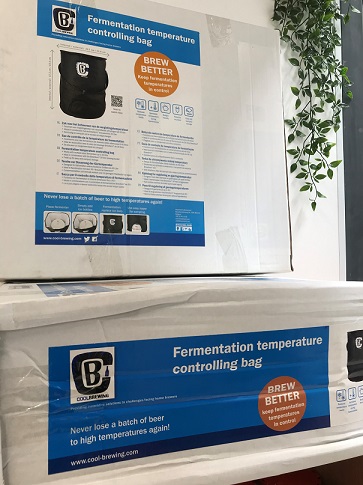
A common question often asked by many new brewers is what can I do to improve my beer? Now whilst there are an immense number of variables that affect not only the taste but the quality of our brews, fortunately one of the biggest factors is an easy one to control, temperature. Now living in this wonderful country we are blessed with often great weather, unfortunately this often doesn’t coincide with the ideal conditions for brewing. Today we will run over a few measures we can implement to help with temperature control and brewing in winter at a variety of price points because not everything has to be fancy and expensive.
Why is temperature so important?
Every style of brew will have a variety of yeast best suited; yeast is a living organism that is responsible for not only the fermentation but also many of the desirable flavours attributed to each brew. Being a living organism, we want to keep it as healthy and happy as possible. Temperature is a huge factor in this as the more stress put on yeast in higher temperature ranges the greater amounts of esters, fusels and phenols are created. Now although these contribute to flavour, excessive production can lead to undesirable flavours and fusels which are often described as “burning.” Every yeast strain will have a recommended range for fermentation and should be adjusted accordingly. As a reference point though, Ales are generally fermented between 16-24*C and Lagers 8-14*C respectively. The ideal fermentation temperature though is generally the medium of both numbers.
Winter, let’s start with the cheapest one of all, free!
Now this is obviously going to differ immensely based on where abouts in the world you reside, but I will go over some ideas I’m sure everyone can implement in some capacity. When brewing you want a cool dry area out of direct sunlight. The laundry, underneath the stairs or an insulated garage are often your best bets. Although the humble garden shed can be good, the inclination for it to heat up during the day in Australia is why I would avoid it, as we don’t want varying temperatures.
There are a few different items we can utilize to best control the temperature of our brews, the first being a brew blanket. Something as simple as a nice thick blanket to help insulate the fermenter from any external varying temperatures, will help with temperature control and brewing in winter.
The next item would be a fermenter jacket or bag, this is a commercially produced insulated item that allows enough void between the fermenter and insulation for you to place ice packs or frozen bottles. They are a very efficient and economical option as you’re able to use them time and again with no real added cost, being a mobile item is extremely handy as you’re not confined to a certain area in order to utilize them.
Refrigerator temperature controller, this is a small unit that is designed as a plug and play. It is essentially a circuit board that adjusts the power output of any device attached to it via a temperature probe. These items are relatively cheap costing usually between $50-$80, the greater expense of these items is the device plugged into them.
Finally, we’re at arguably the easiest but most costly of all the options, the refrigerator. Although this isn’t always the case as there are many online options for second hand or unwanted items, it’s often a matter of luck. The sky is really the limit on how much you wish to spend but, in all sincerity, you don’t need anything pretty or flashy to make some incredible beer. It’s about utilizing the tools at hand to best do the job, for myself an older fridge out in the garage I obtained off marketplace for $200 has paid for itself a thousand times over in the last few years.
In conclusion there is no right way to go about controlling the temperature of your brews, find something that suits yourself and lifestyle that is trustworthy and consistent. Being a little more vigilant and spending the extra time will reap far more rewards than the effort or expense sown.
